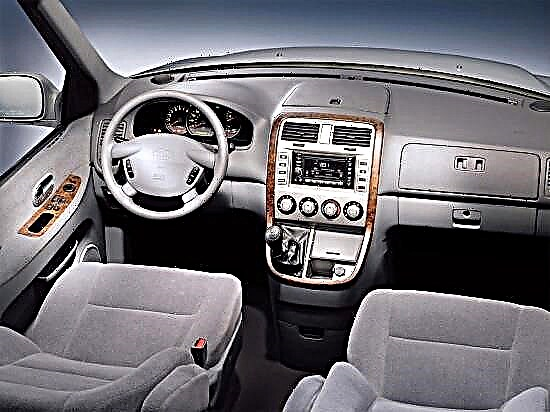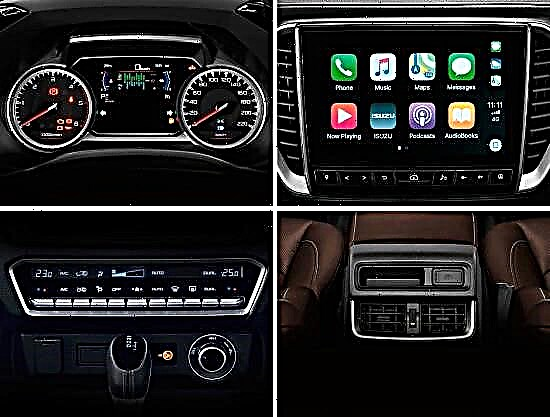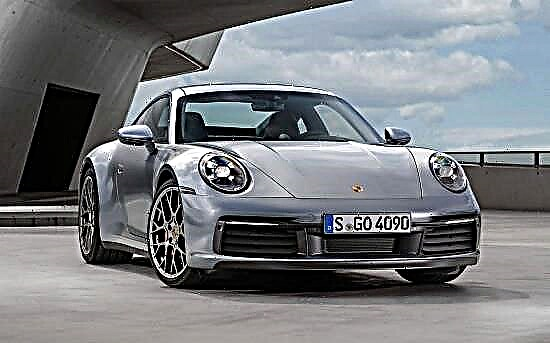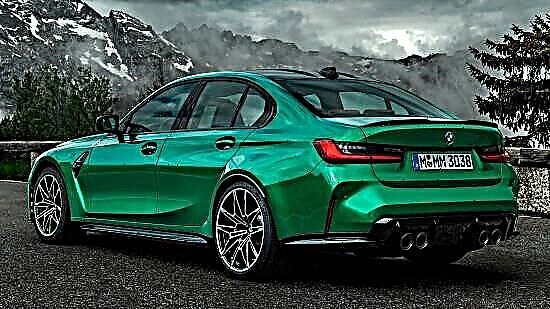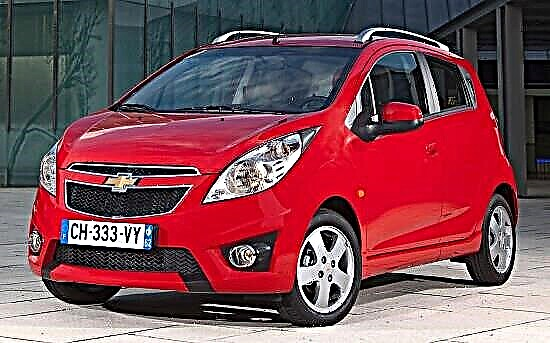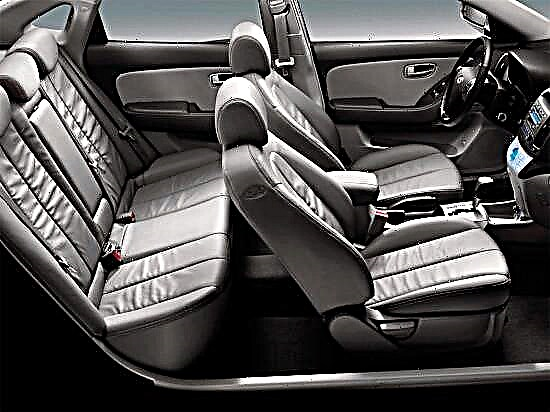The official premiere of the 4th generation sedan took place in April 2006 at the New York Auto Show, and its European bride shows took place a few months later - at the end of August at an exhibition in Moscow. The car was present on the market until 2010, after which the next generation model was released to replace it.

"Fourth Elantra" looks interesting and imposing, and in its features one can immediately trace belonging to this brand. The specificity of the body is added by the waist line, which rises up, then falls, then goes up again, and solidity is the shape of the optics and embossed bumpers. Of course, this design looks good, but it would be better suited to higher class cars.

In terms of its overall dimensions, the Elantra HD is a typical golf sedan: 4505 mm in length (of which 2605 are reserved for the wheel base), 1775 mm in width and 1480 mm in height. The vehicle's curb ground clearance is 160 mm.
Interior

The three-volume cabin leaves a positive impression - it is not only pleasing to the eye, it is actually beautiful. The "donut" of the steering wheel is attractive in appearance and has an optimal diameter, and the instrument cluster, for all its simplicity, is endowed with excellent informational content. The central console, divided into two parts, is also adequately decorated: an audio system is located on top, and an air conditioner with a monochrome display, similar in shape to a window, is located below.

The quality of finishing materials in the 4th generation Hyundai Elantra is at a high level: the dashboard is made of soft to the touch and pleasant-looking plastics, silver inserts are not perceived as "cheap", and the seats are dressed in solid fabric.
The amount of space inside will suit almost everyone - there is enough of it both in the front seats with a good layout, which perhaps only lack support on the sides, and on the back sofa, designed for three adult riders.
The volume of usable space in the cargo compartment is 460 liters, and if you fold the back of the back sofa in unequal parts, it becomes possible to transport long items. The manufacturer saved on the spare wheel by placing only a compact "stowaway" in the luggage compartment underground.
Specifications
On the Russian market, the "fourth Elantra" was offered with two gasoline engines, each of which was equipped with a 5-speed "mechanics" or 4-speed "automatic", as well as front-wheel drive.
- The "junior" power unit is a 1.6-liter four-cylinder in-line "atmospheric", the output of which is 122 horsepower and 154 Nm of torque. Depending on the version, the dynamic characteristics of the sedan are 10-11.6 seconds, the top speed is 183-190 km / h, and the fuel consumption is 6.2-6.7 liters.
- The "older" atmospheric "four" has a volume of 2.0 liters and a capacity of 143 "horses", and its peak potential reaches 190 Nm. Maximum such "Elantra" is capable of developing 190 km / h, and the conquest of the first hundred takes 8.9 seconds with the manual gearbox and 10.5 seconds with the automatic gearbox (fuel consumption in mixed mode is 7.1 and 8.3 liters, respectively).
In other markets, this sedan was also equipped with a 1.6-liter turbodiesel, depending on the degree of boost, 85 "horses" and 255 Nm of torque or 115 forces and 255 Nm and combined exclusively with "mechanics". There was also a gasoline engine of the same size, which produces 105 horsepower and 146 Nm.
Design features
The 2007 Elantra sedan is based on the global Hyundai-Kia J4 bogie. The car is equipped with a fully independent suspension, where the front is represented by MacPherson struts, and the rear is a multi-link scheme with twin-tube gas shock absorbers.
A sedan with a 1.6-liter engine was equipped with a power steering, and with a 2.0-liter one - an electric power steering. Disc brakes with ABS and EBD functions are applied to each of the four wheels.
Pros and cons
The owners of the 4th generation "Elantra" note that the car has an attractive body design, well-designed interior, good equipment, energy-intensive suspension, reliable design and low-cost maintenance.
Still, it was not without its drawbacks - weak insulation in the area of the wheel arches, an outdated "automatic", pronounced rolls when cornering.
Prices
At one time in Russia, this Korean "golf sedan" was quite popular, so in 2015 there is a large number of offers on the secondary market at an average price of 320,000 to 450,000 rubles.

